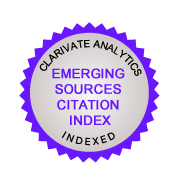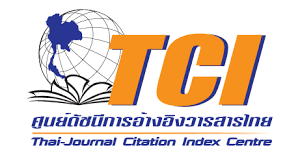Improvement in the properties of silica-reinforced natural rubber with the sustainable interfacial modifier: Effect of molecular weight and content of interfacial modifier
DOI:
https://doi.org/10.55713/jmmm.v29i4.470Keywords:
Hydroxyl telechelic natural rubber, Interfacial modifier, Natural rubber, Rubber-filler interaction, SilicaAbstract
Silica is the most reinforcing filler for enhancing the rubber properties. However, the incompatibility of silica with non-polar rubber is the main problem for application. Therefore, the researchers attempted to use the several methods in order to solve the problem. In this work, the appropriated hydroxyl telechelic natural rubber (HTNR) was determined by varying molecular weights in the range of 2,000-3,000 g·mol-1 and contents in the range of 4-16%w/w of silica content in order to enhance the rubber properties. It was found that the decrease in Payne effect and the improvement in cure characteristics of silica-reinforced NR were achieved by using HTNR. However, the incorporation of various molecular weights and contents of HTNR in rubber influenced C1 (crosslink density determined by stress-strain measurement) in rubber, which related to rubber properties. The increasing in C1 caused the increases in tensile strength and abrasion index and the decrease in heat build-up. The optimum properties of rubber with silica loading at 30 phr was achieved by adding 2,000 g·mol-1 HTNR at a loading of 8%w/w of silica content. However, for silica-reinforced NR, TESPT provided better properties than HTNRs.Downloads
References
A. Ciesielski, An introduction to rubber technology, Shropshire: Rapra Technology Limited, 1999, pp. 174.
J. H. Bachmann, J. W. Sellers, M. P. Wagner, and R. F. Wolf, “Fine particle reinforcing silicas and silicates in elastomers,” Rubber Chemistry and Technology, vol. 32, pp. 1286-1391, 1959.
N. Sombatsompop, S. Thongsang, T. Markpin, and E. Wimolmala, “Fly ash particles and precipitated silica as fillers in rubbers. I. Untreated fillers in natural rubber and styrene– butadiene rubber compounds,” Journal of Applied Polymer Science, vol. 93, pp. 2119- 2130, 2004.
P. Nontasorn, S. Chavadej, P. Rangsunvigit, J. H. O’Haver, S. Chaisirimahamorakot, and N. Na-Ranong, “Admicellar polymerization modified silica via a continuous stirred-tank reactor system: Comparative properties of rubber compounding,” Chemical Engineering Journal, vol. 108, pp. 213-218, 2005.
M. Marini, B. Pourabbas, F. Pilati, and P. Fabbri, “Functionally modified core-shell silica nanoparticles by one-pot synthesis,” Colloids and Surfaces A: Physicochemical and Engineering Aspects, vol. 317, pp. 473-481, 2008.
B. Akhavan, K. Jarvis, and P. Majewski, “Hydrophobic plasma polymer coated silica particles for petroleum hydrocarbon removal,” ACS Applied Materials & Interfaces, vol. 5, pp. 8563-8571, 2013.
P. Saramolee, K. Sahakaro, N. Lopattananon, W. K. Dierkes, and J. W. M. Noordermeer, “Compatibilization of silica-filled natural rubber compounds by combined effects of functionalized low molecular weight rubber and silane,” Journal of Elastomers & Plastics, vol. 48, pp. 145-163, 2015.
K. Sengloyluan, W. K. Dierkes, J. W. M. Noordermeer, and K. Sahakaro, “Reinforcement efficiency of silica in dependence of different types of silane coupling agents in natural rubber-based tire compounds,” KGK Kautschuk Gummi Kunststoffe, vol. 69, pp. 44-53, 2016.
G. Seo, S. Park, K. Ha, K. Choi, C. Hong, and S. Kaang, “Effectively reinforcing roles of the networked silica prepared using 3,3′-bis (triethoxysilylpropyl) tetra sulfide in the physical properties of SBR compounds,” Journal of Materials Science, vol. 45, pp. 1897-1903, 2010.
E. P. Plueddemann, Silane Coupling Agents, New York: Springer, 1982, pp. 1-29.
O. Klockmann, A. Hasse, and H. D. Luginsland, “Special Silanes for special elastomers,” Kautschuk Gummi Kunststoffe, vol. 56, pp. 471-477, 2003.
U. Goerl, A. Hunsche, A. Mueller, and H. G. Koban, “Investigations into the Silica/Silane Reaction System,” Rubber Chemistry and Technology, vol. 70, pp. 608-623, 1997.
S. S. Choi and S. J. Choi, “Influence of silane coupling agent content on crosslink type and density of silica-filled natural rubber vulcanizates,” Bulletin-Korean Chemical Society, vol. 27, pp. 1473-1476, 2006.
K. Sengloyluan, K. Sahakaro, W. K. Dierkes, and J. W. M. Noordermeer, “Silica-reinforced tire tread compounds compatibilized by using epoxidized natural rubber,” European Polymer Journal, vol. 51, pp. 69-79, 2014.
K. Sahakaro, and S. Beraheng, “Reinforcement of maleated natural rubber by precipitated silica,” Journal of Applied Polymer Science, vol. 109, pp. 3839-3848, 2008.
U. Dileep and S. A. Avirah, “Studies on carboxyterminated natural rubber in filled NR and NR latex vulcanizates,” Iranian Polymer Journal, vol. 12, pp. 441-448, 2003.
C. W. Phetphaisit, R. Bumee, J. Namahoot, J. Ruamcharoen, and P. Ruamcharoen, “Polyurethane polyester elastomer: Innovative environmental friendly wood adhesive from modified PETs and hydroxyl liquid natural rubber polyols,” International Journal of Adhesion & Adhesives, vol. 41, pp. 127-131, 2013.
N. Kébir, I. Campistron, A. Laguerre, J. F. Pilard, C. Bunel, and T. Jouenne, “Use of telechelic cis-1,4-polyisoprene cationomers in the synthesis of antibacterial ionic polyurethanes and copolyurethanes bearing ammonium groups,” Biomaterials, vol. 28, pp. 4200-4208, 2007.
A. Saetung, A. Rungvichaniwat, I. Campistron, P. Klinpituksa, A. Laguerre, P. Phinyocheep, and J. F. Pilard, “Controlled degradation of natural rubber and modification of the obtained telechelic oligoisoprenes: Preliminary study of their potentiality as polyurethane foam precursors,” Journal of Applied Polymer Science, vol. 117, pp. 1279-1289, 2010.
A. Saetung, A. Rungvichaniwat, P. Bannob, P. Tsupphayakorn-ake, T. Tulyapituk, and N. Saetung, “Properties of waterborne polyurethane films: Effects of blend formulation with hydroxyl telechelic natural rubber and modified rubber seed oils,” Journal of Polymer Research, vol. 23, pp. 1-10, 2016.
S. Radabutra, S. Saengsuwan, R. Jitchati, and M. Kalapat, “Preparation and characterization of modified telechelic natural rubber-based pressure-sensitive adhesive,” Journal of Adhesion Science and Technology, vol. 31, pp. 1-15, 2017.
P. H. Ly, “Reinforcement of natural rubber from hydroxyl- terminated liquid natural rubber grafted carbon black. I. Grafting of acyl chloride capped liquid natural rubber onto carbon black,” Journal of Macromolecular Science, Part A, vol. 33, pp. 1931-1937, 1996.
K. Katueangngan, “Silica Reinforcement of Natural Rubber with Modified Natural Rubber as Interfacial Modifier,” Doctoral Degree of Polymer Technology, Prince of Songkla University, Pattani, 2018.
N. Kébir, G. Morandi, I. Campistron, A. Laguerre, and J. F. Pilard. “Synthesis of welldefined amino telechelic cis-1,4-oligoisoprenes from carbonyl telechelic oligomers; first studies of their potentialities as polyurethane or polyurea materials precursors,” Polymer, vol. 46, pp 6844-6854, 2005.
R. Hagen, L. Salmén, and B. Stenberg, “Effects of the type of crosslink on viscoelastic properties of natural rubber,” Journal of Polymer Science Part B: Polymer Physics, vol. 34, pp. 1997-2006, 1996.
K. Katueangngan, T. Tulyapitak, A. Saetung, S. Soontaranon, and N. Nithi-uthai, “Renewable interfacial modifier for silica filled natural rubber compound,” Procedia Chemistry, vol. 19, pp. 447-454, 2016.
S. S. Choi, I. S. Kim, and C. S. Woo, “Influence of TESPT content on crosslink types and rheological behaviors of natural rubber compounds reinforced with silica,” Journal of Applied Polymer Science, vol. 106, pp. 2753- 2758, 2007.
M. J. Wang, “Effect of polymer-filler and filler-filler interactions on dynamic properties of filled vulcanizates,” Rubber Chemistry and Technology, vol. 71, pp 520-589, 1998.
I. Surya, H. Ismail, and A. R. Azura, “Alkanolamide as an accelerator, filler-dispersant and a plasticizer in silica-filled natural rubber compounds,” Polymer Testing, vol. 32, pp. 1313-1321, 2013.
H. Kang, K. Zuo, Z. Wang, L. Zhang, L. Lui, and B. Guo, “Using a green method to develop graphene oxide/elastomers nanocomposites with combination of high barrier and mechanical performance,” Composites Science and Technology, vol. 92, pp. 1-8, 2014.
Z. Tang, X. Wu, B. Guo, L. Zhang, and D. Jia, “Preparation of butadiene-styrene-vinyl pyridine rubber-graphene oxide hybrids through cocoagulation process and in situ interface tailoring,” Journal of Materials Chemistry, vol. 22, pp. 7492-7501, 2012.
S.Z. Moghaddam, S. Sabury, and F. Sharif, “Dispersion of rGO in polymeric matrices by thermodynamically favorable self-assembly of GO at oil-water interfaces,” RSC Advances, vol.4, pp. 8711-8719, 2014.
Downloads
Published
How to Cite
Issue
Section
License
Copyright (c) 2019 Journal of Metals, Materials and Minerals

This work is licensed under a Creative Commons Attribution-NonCommercial-NoDerivatives 4.0 International License.
Authors who publish in this journal agree to the following terms:
- Authors retain copyright and grant the journal right of first publication with the work simultaneously licensed under a Creative Commons Attribution License that allows others to share the work with an acknowledgment of the work's authorship and initial publication in this journal.
- Authors are able to enter into separate, additional contractual arrangements for the non-exclusive distribution of the journal's published version of the work (e.g., post it to an institutional repository or publish it in a book), with an acknowledgment of its initial publication in this journal.








